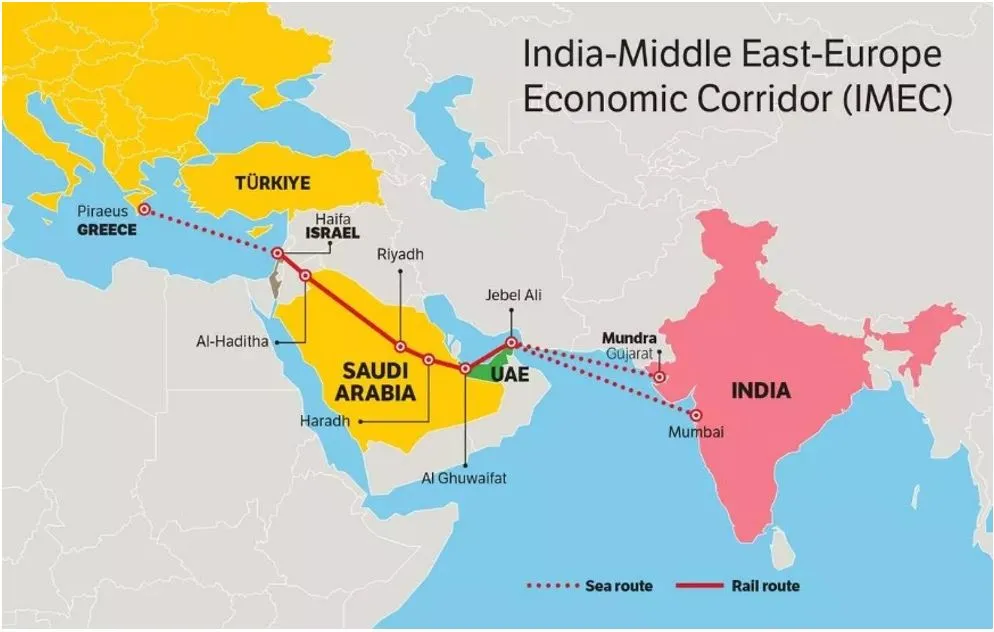

13th February 2025 (13 Topics)
Context
Prime Minister Narendra Modi and French President Emmanuel Macron agreed the two countries should work more closely on building the India-Middle East-Europe Corridor (IMEEC).
About
- The IMEEC is a multilateral initiative to revive ancient trade routes and forge new economic ties between regions that have historically been interconnected through commerce, culture and collaborative diplomacy.
- It aims to integrate India, Europe, and the Middle-East through UAE, Saudi Arabia, Jordan, Israel and the European Union.
- The corridor will connect western India, the UAE’s Ras Al Khaimah, Saudi Arabia, Jordan, Israel, and then continue to Europe across the Mediterranean Sea.
- The IMEEC will have two separate corridors –
- East Corridor connecting India to the Gulf
- Northern Corridor connecting the Gulf to Europe
- Ports in the India-Middle East-Europe Economic Corridor (IMEC)
- India: Mundra Port (Gujarat), Kandla Port (Gujarat), Jawaharlal Nehru Port Trust (Navi Mumbai)
- Middle East: Fujairah Port (UAE), Jebel Ali Port (UAE), Abu Dhabi Port (UAE), Dammam Port (Saudi Arabia), Ras Al Khair Port (Saudi Arabia)
- Railway Line: The railway will link Fujairah Port (UAE) to Haifa Port (Israel), passing through Saudi Arabia (via Ghuwaifat and Haradh) and Jordan.
- Israel: Haifa Port (Israel)
- Europe: Piraeus Port (Greece), Messina Port (Southern Italy), Marseille Port (France)
- The corridor intends to enhance connectivity, increase efficiency, reduce costs, secure regional supply chains, increase trade accessibility, generate jobs and lower greenhouse gas emissions, resulting in a transformative integration of Asia, Europe and Middle East.
- The rail and shipping corridor is part of the Partnership for Global Infrastructure Investment (PGII).
- It is a collaborative effort by G7 nations to fund infrastructure projects in developing nations.
- PGII is considered to be the bloc’s counter to China’s Belt and Road Initiative.

More Articles

